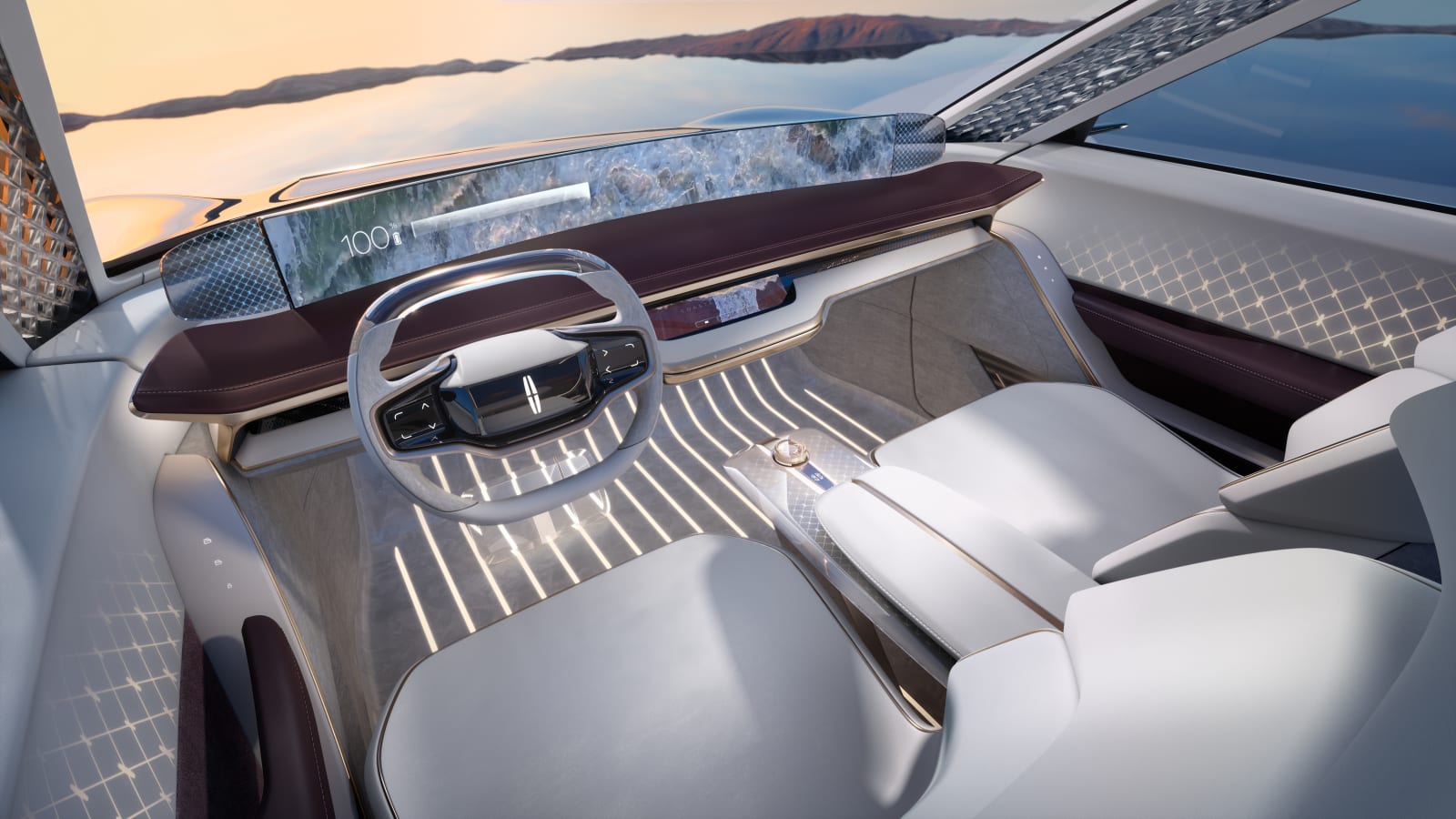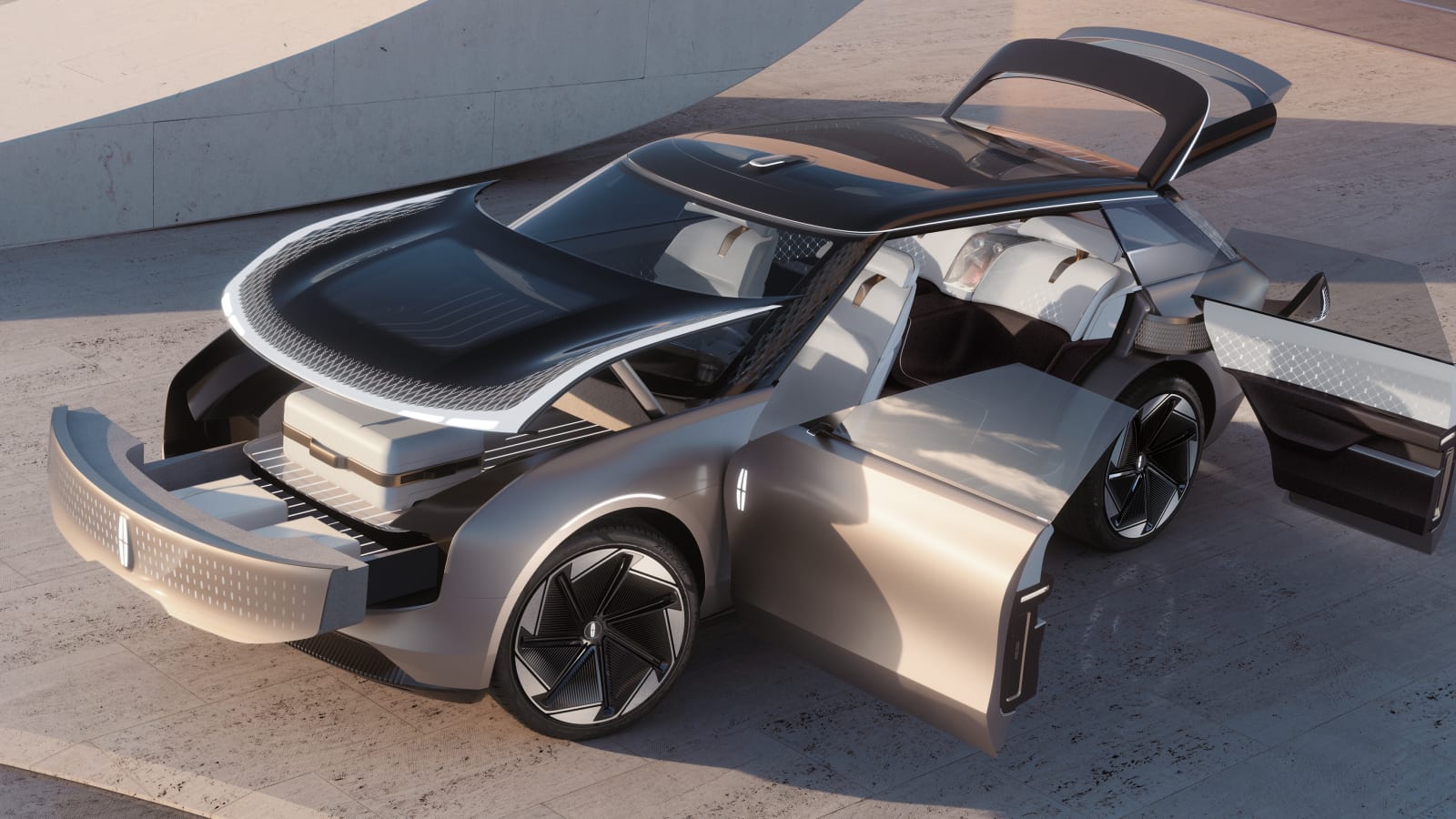The auto industry is in the midst of what has been called a once-in-a-century transformation as it shifts to zero-emissions propulsion. As it happens, this year also marks Lincoln’s 100th anniversary. There were actually Lincolns a few years earlier, but Lincoln counts Feb. 4, 1922, when Henry Ford purchased the company, as its birthday. Like many, Lincoln wants to electrify its lineup, and plans to introduce four new battery-electric vehicles by 2026. Today it unveiled the car that will inform that future, the Lincoln Star Concept.
“It’s a clean-sheet of paper to help us get through the next four products,” chief exterior designer Earl Lucas told Autoblog at a preview. But when asked whether it’s a crossover, Lincoln’s representatives resist dropping it into any existing categories. Global Design Director Kemal Curic describes it as a “new species.”
It lacks the upright, two-box design of crossovers and SUVs dotting America’s roads. Instead it has a dramatically raked A-pillar and an even more acutely angled rear. The greenhouse area tapers towards the rear, and the main body has a distinct anti-wedge silhouette. To these eyes, it has almost wagon-like proportions.
The other hallmark of the Star is its use of lighting. Illuminated surfaces can be found throughout the car — on logos where badges would normally reside, on a thin band that outlines the roof, and on fingernails that trace the wheel arches. There’s also an unmissable light bar that spans the leading edge of the nose before curving up over the fenders and to the A pillars. It’s reminiscent of the chrome strips on the blade-like fenders of the 1961 Continental, but the designers we talked to denied that resemblance. The Star is decidedly anti-chrome, and lighting takes the place of that brightwork.
Throughout our walkaround, designers used phrases that evoked a jet age view of transit. “It’s the journey, not the destination,” said Lucas. Curic uses the term “in flight” when talking about driving modes. Chief interior designer Robert Gelardi called it “the romance of travel.” It’s as if the Star was channeling a time when Lincolns like the Continental Mark II, once the most expensive domestic car ever sold, bore the American standard around the world and went toe-to-toe against the likes of Rolls-Royce.
As such, the interior of the Star, accessed by a pair of suicide doors, seeks to soak occupants in Lincoln’s definition of luxury. The use of lighting continues in the headliner, A pillars, door panels, armrest consoles, and even seat backs. A bright, unbroken “coast-to-coast” screen spans the dash, incorporating instruments and auxiliary controls. Even the floorboards feature strips of ambient lighting that stretch from the cowl to just behind the front seats. Those front seats also rotate 180 degrees to face the rear, but Lincoln wouldn’t commit to any autonomous function.
The lights allows the Star to bathe riders in one of three “rejuvenation moods”, in which colored lighting, ambient sound, and built-in aroma diffusers can create distinct auras. By default, if one slips into the Star in the a.m., the Coastal Morning mood displays flowing water on the screens, accompanied by the white noise of an ocean while the lighting casts a dawn-like glow. Enter the car midday and the atmosphere changes to an energizing Mindful Vitality, while late-day cruises are accompanied by Evening Chill. Of course, drivers can select whichever they like regardless of time of day as well. On the other hand, cycling through the scent profiles gave us the sensation of walking rapidly through the fragrance department at Macy’s.
The Star also uses its openings in novel ways. Its tailgate opens like a clamshell, with the bottom half forming what Lucas calls a love seat. It’s designed for lounging, as a back support emerges from the trunk. Up front, the “grille” area slides forward like a drawer while the “hood” opens on four-link hinges that lifts it like a platter. That hood area is made of electrochromic glass, so one can view or hide the contents of the frunk. The rear doors feature a hidden compartment for an attaché case that can store a laptop or tablet for wireless charging. Lincoln also says it “detects incoming wireless content” that can be displayed on the main screen.
All the Star’s creators we spoke with echoed the sentiment that it was an exciting time to be a designer. The battery electric platform gives them the flexibility to create a new limousine wagon shape that doesn’t really exist in the market right now. Naturally, that raises the question of whether Lincoln, with its long history of luxury saloons, would ever go back to a sedan layout.
We’ve argued that the China-market Zephyr could make a great Tesla alternative. “China is forcing us to keep the sedan alive,” Lucas said, “So at least we have one in our portfolio.” While Lucas declined to say whether such a car would come stateside, the implication seemed to be that if market conditions in America changed Lincoln would have a product at the ready.
Ultimately, the Star is just a concept, but it does represent the philosophy Lincoln will take as it makes its EV transition. The brand expects to have a zero-emission fleet by 2030. We’ll have to see if there’s any space for Lincoln’s notions of luxury in the increasingly crowded luxury EV marketplace.
Source: www.autoblog.com


